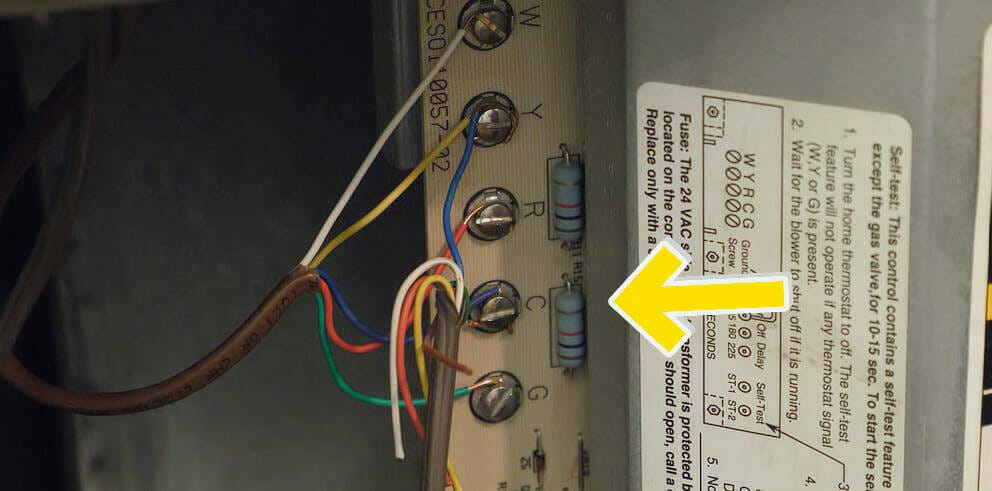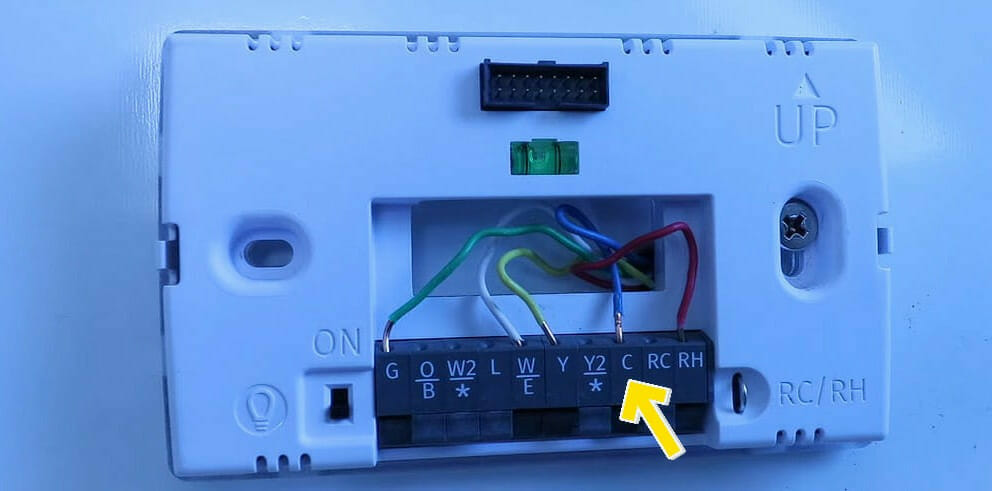What is a Common Wire (Understanding its Role)

Understanding each wire’s function and purpose is crucial. One such wire that often raises questions is the common wire.
The common wire, often known as the C-wire in electrical systems, is the return path in an electrical circuit, enabling current flow. It ensures a steady power supply for devices with continuous features like digital displays and Wi-Fi. It is also essential for safety, grounding, voltage stabilization, noise reduction, and device protection.
In this article, I’ll demystify the concept of the common wire, explaining its role, importance, and applications in various contexts.
Definition of a Common Wire

It’s often called the C-wire, depending on the context and the electrical system involved.
In the U.S., the common wire is usually the white one in a circuit. This color standard, set by the National Electrical Code (NEC), helps everyone identify each wire’s purpose.
Note, however, that color coding may differ in other countries or specific systems, so always refer to a professional or your device’s wiring diagram.
Role of the Common Wire in Electrical Circuits
To understand the role of the common wire in electrical circuits, we need a basic grasp of how electricity works.
Think of an electrical circuit as a closed loop allowing electric current flow. This loop usually comprises a power source, a load (or device being powered), and wires that link the source and the load.
The common wire is key in this loop, serving as the return path, thereby closing the circuit.
When current moves from the power source, it travels via the hot wire to power the device. After this, it must return to the source, where the common wire steps in.
The common wire returns the current to the source, thus closing the circuit. Without the common wire, the circuit is open, and the current can’t flow.
That’s why a disconnected or damaged common wire means the connected device won’t work; the circuit is incomplete.
Besides closing the circuit, the common wire is critical in maintaining a steady power supply. Many electrical devices need a constant flow of electricity to work right.
The common wire guarantees this, offering a stable path for the current to return. This is crucial for devices with ongoing features like digital displays, WiFi, or smart home features.
Without the common wire, these features might not get the constant power they need to work correctly.
In a nutshell, the common wire is key to any electrical circuit. It closes the circuit, lets current flow, and ensures a steady power supply for electrical devices’ smooth and efficient operation.
Common Wire in Different Contexts
| Key Points about the Common Wire | Description |
|---|---|
| Function in an Electrical Circuit | The common wire plays a crucial role in a basic electrical circuit, a closed loop that includes a power source, a load, and wires. The common wire serves as the return path, completing the circuit. |
| Role in Power Flow | When current moves from the power source, it goes through the hot wire to power the device. Afterward, it needs a path to return to the source provided by the common wire. The circuit remains open without it, and the current can’t flow, rendering the device non-operational. |
| Role in Maintaining Power Supply | The common wire is essential for ensuring a steady power supply. It guarantees a constant flow of electricity, which many electrical devices require to function correctly. This is particularly vital for devices with continuous features like digital displays, WiFi, or smart home features. |
Importance of the Common Wire in Modern Devices

As mentioned, the common wire is critical in modern devices and electrical systems.
Its main functions are to provide a return path for electrical current and to ensure the safety of the user and device. Here are a few reasons why the common wire is important:
- Return Path for Electrical Current: In alternating current (AC) systems, the common wire serves as the return path for the current. The circuit would be incomplete without a common wire, and the device would not function.
- Safety and Grounding: The common wire is often connected to the earth (grounded) to prevent electrical shocks and device malfunction. If there’s a fault in the device (like a live wire touching the metal casing), the common wire allows the electricity to flow directly to the ground, reducing the risk of electrical shock.
- Voltage Stabilization: The common wire also helps stabilize voltage levels. In an AC system, the voltage can vary, and the common wire helps maintain a consistent voltage level, which is crucial for the proper operation of many devices.
- Noise Reduction: Electrical noise, often caused by other electrical devices or appliances, can interfere with the operation of sensitive electronic devices. The common wire can help reduce this noise by providing a pathway for it to be grounded, improving the performance and reliability of the device.
- Enhanced Device Protection: The common wire, especially when used as a grounding wire, provides additional protection for devices from power surges or over-voltages. These can occur due to lightning strikes or other disruptions in the power grid. The common wire can help protect delicate electronics from damage by providing a direct path to the ground.
As such, the common wire is crucial for the safe and efficient operation of modern devices, protecting both the user and the device itself.
References
Organizations:
- National Electrical Manufacturers Association (NEMA). https://www.nema.org/
- Institute of Electrical and Electronics Engineers (IEEE). https://www.ieee.org/
- National Fire Protection Association (NFPA). http://www.nfpa.org/
Books:
- “Electrical Wiring Residential” by Ray C. Mullin and Phil Simmons
Websites:
- Electrical101. https://www.electrical101.com/
Video References:
Tech With Brett
